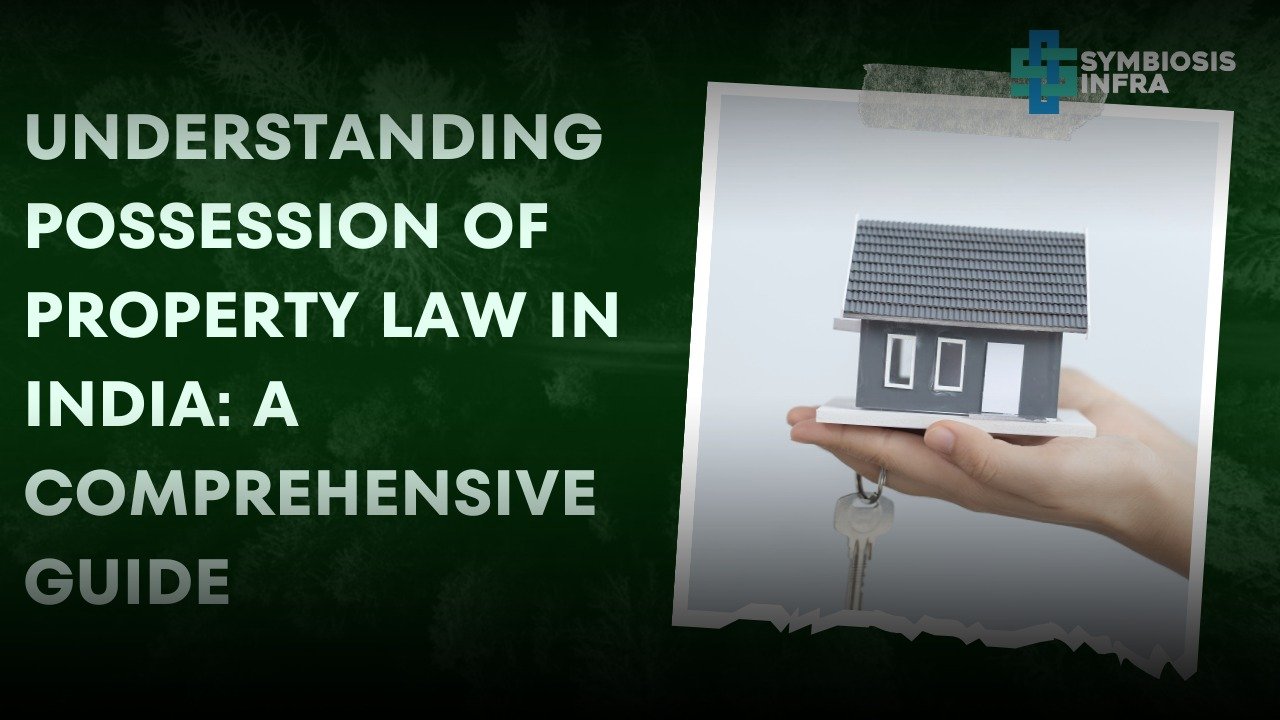Possession of assets is a fundamental concept in belongings regulation that defines someone’s rights and responsibilities in terms of ownership and management. In India, belongings ownership has main legal outcomes, mainly in the case of unfavourable ownership. This academic will cross into the specifics of possession regulation, which includes definitions, sorts, and current Supreme Court selections.
What is Possession of Property?
Possession of belongings law in India is the bodily control and ownership of land or belongings by using a person or entity. It denotes an immediate courtship between the possessor and the belongings, which incorporates each factual and legal possession of property. Factual possession implies a tangible career, whereas criminal ownership refers to legally identified ownership rights. Understanding the variations between the two is essential for comparing asset rights and settling conflicts.
Also Read: ULB Haryana Property Tax: Latest Updates 2024
The 4 Types of possession of property
In asset law, ownership can take on many extraordinary forms of paperwork, each with its own personal characteristics and legal implications. Understanding extraordinary varieties of possession of property is vital for identifying asset rights and settling conflicts. Here are the 4 essential sorts:
Actual Possession: Actual possession takes place at the same time as a man, woman or entity bodily occupies and controls a belonging. This form of ownership is easy and tangible, concerning direct interaction with the assets. It usually includes living in or actively using the belongings, together with residing in a residence, cultivating land, or operating an enterprise in an industrial area. Actual ownership is often a key detail in identifying possession rights and duties.
Constructive Possession: Constructive possession differs from real possession in that it does not continually incorporate physical occupancy. Instead, it arises from felony entitlement or management over the assets, even in the absence of direct physical presence. This form of possession can result from possession, rent agreements, or different contractual preparations that confer rights to the property. For example, a landlord can also have optimistic ownership of rented assets, regardless of the reality that they are not dwelling there themselves.
Joint Possession: Joint possession occurs when multiple people or entities share the management and occupancy of a belonging. This can get up in numerous scenarios, together with co-possession, partnership agreements, or tenancy in commonplace. In joint possession, every celebration usually has equal rights to the property, and selections concerning its use and control are made collectively. Joint ownership arrangements regularly require clean communication and cooperation in some of the events to keep away from conflicts and make certain clean operations.
Adverse Possession: Adverse possession is a completely precise sort of ownership that allows a man or woman to assert possession of belongings by overtly and continuously occupying them without the proprietor’s consent for a precise duration. In India, this period is typically 12 years. Adverse ownership calls for a negative career, meaning the possessor acts as if they’re the rightful owner, and their ownership is non-stop and uninterrupted. If these situations are met, the possessor can also additionally accumulate crook identification on the belongings, extinguishing the owner’s rights.
Understanding the four classes of ownership is important for navigating asset regulation and managing troubles together with possession, control, and conflicts. Each category has its own non-public set of rights and duties, which have an effect on the criminal panorama of asset possession and use.
Adverse Possession of Property
Adverse ownership is a hard feature of asset regulation that lets a person assert possession rights to land by brazenly usually residing in it for a set amount of time, typically 12 years in India. This prison philosophy seeks to balance the hobbies of possessors and owners, encouraging land use while opposing overlook. However, unfavourable possession continues to be a hassle in certain situations, which include adversarial careers, perseverance with ownership, and compliance with prison responsibilities.
Supreme Court Decision on 12 Years of Property Possession
In a primary selection, the Supreme Court of India upheld the 12-year time-frame for unfavourable possession claims inside the case of _____ versus _____. The courtroom emphasised the significance of continuous possession and aggressive motives in setting up unfavourable possession rights. This selection clarified the criminal framework of unfavourable ownership, bringing clarity and consistency to disagreements approximately property during the united states.
Also Read: top real estate agent guide
Latest Supreme Court Judgment on Adverse Possession
In a latest decision, the Supreme Court reiterated the ideas governing destructive possession, emphasising the need for clear and unequivocal evidence to support such claims. The courtroom reaffirmed the importance of unfavourable ownership as a prison remedy while cautioning against its misuse. This ruling underscores the judiciary’s dedication to upholding property rights while acknowledging the evolving dynamics of land possession.
Conclusion
To summarise, possession of belongings regulation in India contains a wide variety of minds and theories, with destructive possession status being a disputed but vital detail. Understanding the differences among possession rights, instructions, and felony precedents is essential for resolving asset conflicts and protecting one’s pursuits. Individuals can effectively protect their property rights and comply with the law by staying updated on modern-day Supreme Court decisions and felony tendencies.
FAQs
What is evidence of possession of property?
A legal document that certifies ownership or possession of property is called a possession certificate. It is provided with information on the property’s legitimate owner or possessor and is issued by the local municipal authority or the appropriate government office.
How do you establish possession of property?
Documents required for obtaining a possession certificate
- Proof of property ownership (title deed)
- Property tax receipts.
- ID proof and address proof of property ownership.
- Property survey sketch or plan.
- Affidavit declaring possession.
What is the possession process?
When a buyer purchases a home, the ownership of the property is transferred from the seller to the buyer, and this includes taking physical possession of the property.
